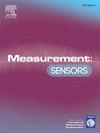利用基于层次链的路由和垂直网络分区技术优化无线传感器网络的寿命
Q4 Engineering
引用次数: 0
摘要
在无线传感器网络(WSN)中,有效利用能源是提高网络寿命的关键问题。然而,在研究路由问题时,不可能不考虑有效形成链或聚类方法来优化 WSNs 中的问题。所提出的路由技术旨在利用各种网络分区技术延长传感器的寿命。该策略采用的方法是 PEGASIS(传感器信息系统中的功率高效收集)协议,它使用普里姆算法来修改链结构,并基于分层链式路由。为了将信息从工作节点传输到基站(BS),我们采用了名为 EEPEG-PA-V 的垂直网络分区技术。根据这种方法,当节点的剩余能量即将耗尽时,就会进行转换。与现有的路由技术相比,建议的方法有可能大幅提高网络的平均寿命。例如,与 PEGASIS 相比,EEPEG-PA 提高了 21.7092 %,EEPEG-PA-V 提高了 29.9056 %。同样,在各种网络规模下,EEPEG-PA-V 比 EEPEG-PA 提高了 6.1708 %。本文章由计算机程序翻译,如有差异,请以英文原文为准。
Optimizing Wireless Sensor Network longevity with hierarchical chain-based routing and vertical network partitioning techniques
Efficient utilization of energy is a crucial concern in Wireless Sensor Networks (WSNs) to increase the network's longevity. However, it is impossible to investigate routing without considering the effective formation of chains or clustering methods to optimize the problem in WSNs. The proposed routing technique aims to extend the lifespan of sensors using various network partitioning techniques. The approach utilized in the strategy is PEGASIS (Power EfficientGathering in Sensor Information Systems) protocol, it uses Prim's Algorithm to modify the chain structure and is based on hierarchical chain-based routing. In order to transmit information from the working nodes to the base station (BS), we employ and vertical network partitioning techniques named EEPEG-PA-V. According to this approach, the transition is carried out when the node's residual energy is about to run out. The suggested method has the potential to enhance the average network longevity substantially when compared to existing routing techniques. For instance, EEPEG-PA improves it by 21.7092 % and EEPEG-PA-V by 29.9056 % compared to PEGASIS. Similarly, EEPEG-PA-V by 6.1708 % compared to EEPEG-PAacross various network sizes.
求助全文
通过发布文献求助,成功后即可免费获取论文全文。
去求助
来源期刊

Measurement Sensors
Engineering-Industrial and Manufacturing Engineering
CiteScore
3.10
自引率
0.00%
发文量
184
审稿时长
56 days
 求助内容:
求助内容: 应助结果提醒方式:
应助结果提醒方式:


